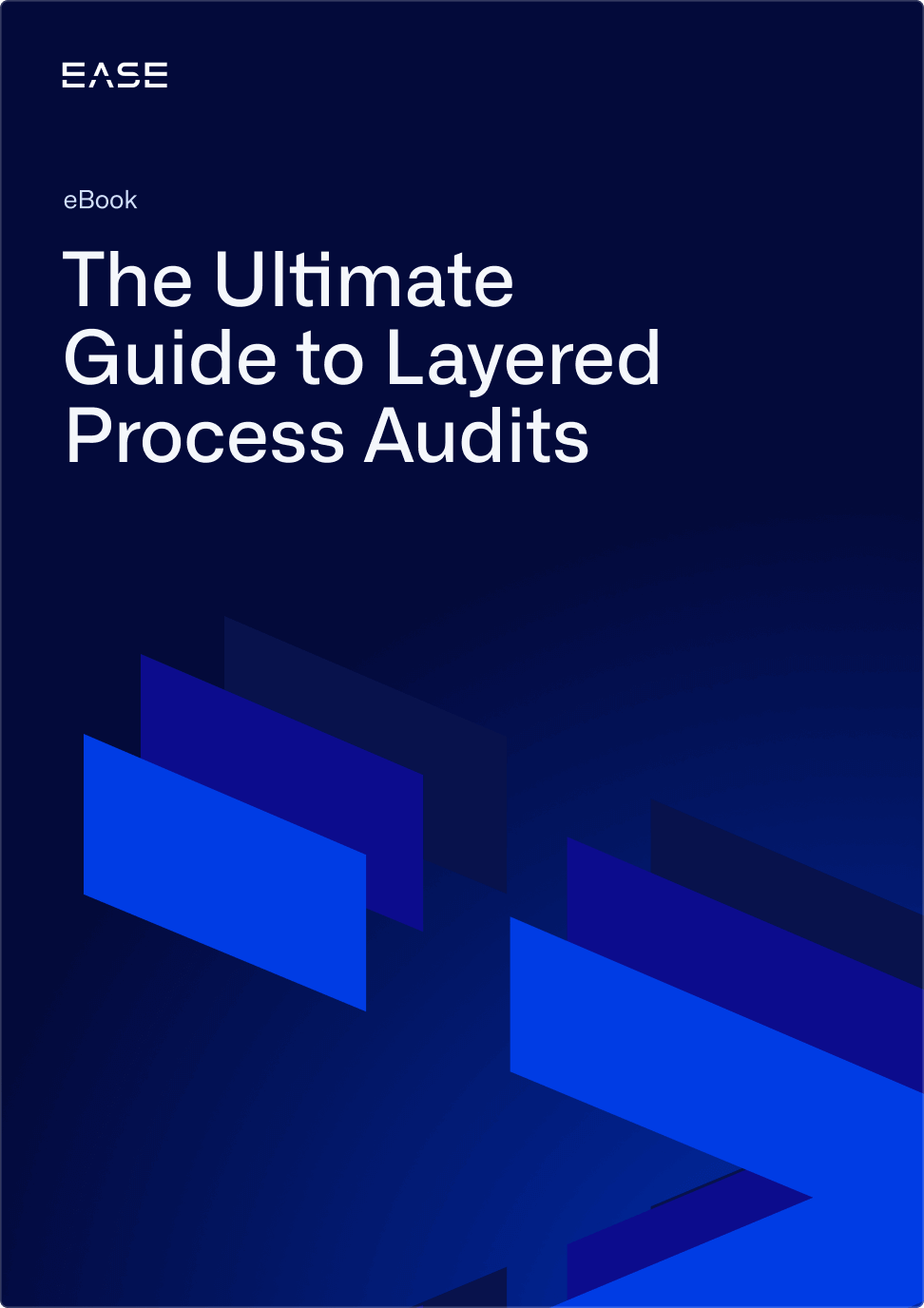5 Must-Haves for a Mature LPA Program


When manufacturers first start out with layered process audits (LPAs), it can take time to figure out how to get the most value from them.
First there’s the scheduling and notifications. Then there’s conducting the audits themselves—and following up on missed audits. Just as important, you must establish effective corrective action and reporting processes to ensure you’re closing the loop on findings and actually fixing problems. Finally, you have to hold your team accountable and communicate wins until LPAs are a daily habit for the team.
However, these are just the basic requirements. A truly mature LPA program goes even further, building on effective use of data to achieve a faster pace of continuous improvement.
So what should you be aiming for to reach a higher level of LPA maturity? To answer that question, we talked to Daniel Perez Castilla at Tenneco Powertrain to see what he looks for when assessing a plant’s level of LPA maturity.
Learn how Jacobs Vehicle Systems increased audit completion rates more than 40% in just six months in this free case study
1. Understanding the True Source of Problems
A high level of LPA maturity demands an understanding that problems start with product and process design, and that the source of defects goes beyond operator mistakes.
It also requires a mindset shift away from blaming operators as a first resort. In reality, human error itself is often a symptom of another problem, such as ineffective training, confusing procedures or environmental distractions.
At the heart of effective problem-solving is root cause analysis. Companies with mature LPA programs use tools like the 5 Whys, Pareto charts, scatter plots and fishbone diagrams to dig deeper into problems and develop permanent fixes.
2. Focusing on Design and Process Inputs
An extension of the above, companies with a high level of LPA maturity do not focus on just detecting defects that already exist. Instead, they emphasize design and process inputs, helping prevent more defects form the outset.
What does this look like in practical terms?
For starters, prevention tools like control plans and failure mode and effects analyses (FMEAs) are updated regularly. Just as important, LPA questions are updated when those control plans or FMEAs change.
Organizations that get the most from LPAs are those that put in the work to design both products and processes to prevent failures, rather than just reacting to problems as they crop up.
3. Transitioning from Paper-Based to Automated LPA Systems
There’s no way around the fact that paper-based LPA systems are not up to the task of support a robust LPA program. There are several reasons for this:
- Reporting is always in retrospect, making it impossible to get ahead of problems.
- It’s impossible to get the big picture because of the vast amount of unstructured information spread across various files and systems.
- Paper-based LPAs aren’t built to scale to a large volume of monthly audits—meaning you just spend all your time chasing paperwork rather than solving problems.
Companies with mature LPA programs use automated systems that eliminate administrative burden to promote more effective reporting, problem-solving and ongoing follow-up. Manufacturers that have reached this level use these processes to identify underlying trends and risks they need to design out of their setup.
4. Finding Commonalities and Systemic Findings
This ability to identify systemic quality issues is a hallmark of mature LPA programs, compared with just hopping around one-off problems or corrective actions.
With automated systems in place, companies become more agile in their ability to update audit checklists as new risks emerge. This allows them to add questions across similar equipment types immediately after an audit finding to quickly determine whether a problem is isolated or widespread. This element is key to focusing efforts on the problems with the biggest impact on quality.
5. All Plants Collect LPA Data
In a mature LPA program, all plants conduct LPAs and analyze findings effectively, helping achieve standardization not just across plants but also across product lines. More than just collecting and reporting on data, companies at this level are using it differently. Here the focus is on leveraging data to enable better decision-making and root cause analysis, connecting LPAs to problem-solving processes that are becoming increasingly effective.
Let’s say, for example, that a known quality issue can have one of four different causes. A company with a mature LPA program would craft questions around the process inputs responsible for each of the four causes, activating the questions whenever this specific quality issue comes up. In this way, leadership is able to get a real-time look at what is happening on the plant floor and where the process is off track.
Achieving a high level of LPA maturity isn’t something that comes overnight, and requires efficient processes and effective use of LPA data. An automated LPA platform like EASE acts as a critical catalyst, helping eliminate time-consuming manual processes to get to the underlying trends driving quality in the organization.
